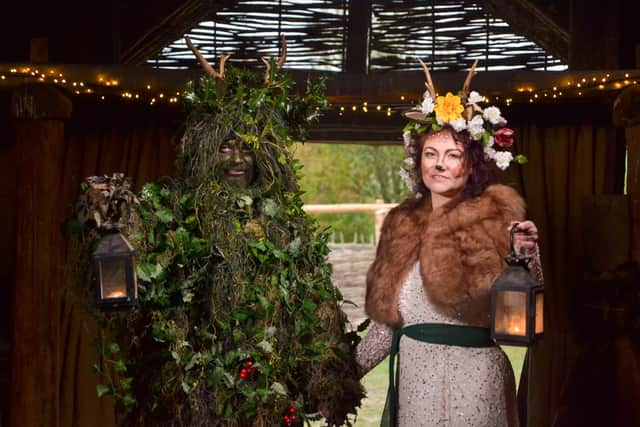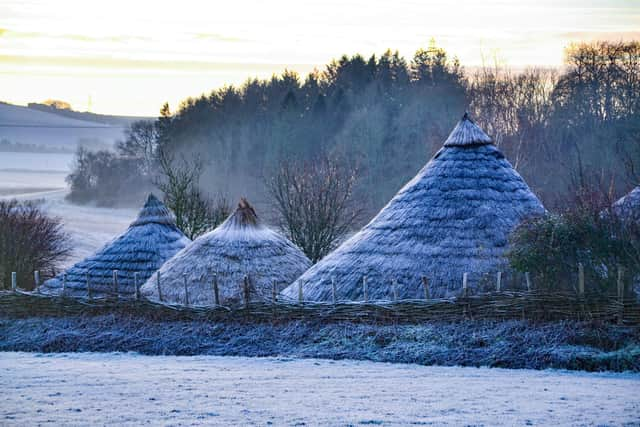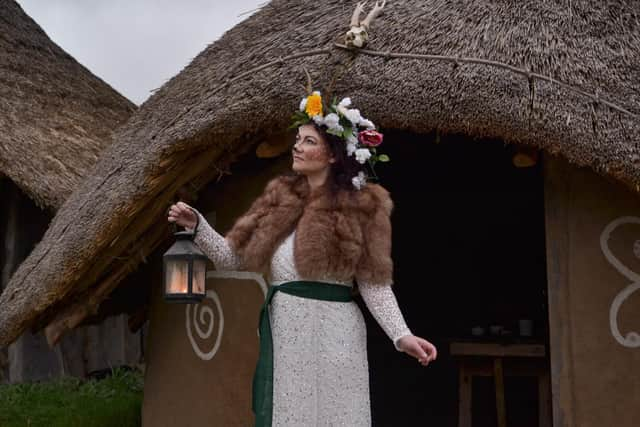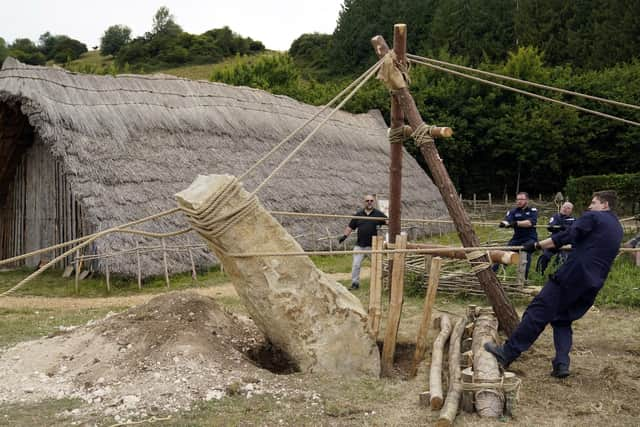Visit Butser Ancient Farm's Winter Magical Adventure and meet the Deer Queen and Holly King
and live on Freeview channel 276
But this year, Butser Ancient Farm is inviting families to slow down, reconnect with nature and explore the ancient folklore of winter.
As an alternative to the traditional Father Christmas experience, Butser’s Ancient Winter Magical Adventure is honouring the balance of the masculine and feminine energies as the season turns. They are inviting The Deer Queen and Holly King into their magical, ancient houses to greet families and help them celebrate the turning of the year. Visitors can expect a hint of magic, a taste of the old, make-and-take crafts, a magical trail, mulled drinks, and sweet treats.
Advertisement
Hide AdAdvertisement
Hide AdThe Deer Queen will be summoning back the light in The Horton House, Butser’s reconstruction of an excavated Neolithic building dating to 3800-3600BC. The addition of a feminine character to the festivities is a nod to the idea of the rebirth of the sun at midwinter. Science tells us that our beloved Rudolph is actually female, as in fact all of Santa’s antler-laden reindeers are. Males drop their antlers in November, leaving them without antlers until the following spring, while females keep their antlers through the winter ready to protect their calves in the spring. Since the Stone Age the deer has been honoured.


Her image was painted on cave walls, antlers adorned shrines and were buried in ceremonial graves. Deer were etched in stone, turned into head-dresses, and even tattooed onto skin. In ancient and modern folklore her antlers were frequently depicted as the tree of life, carrying animals, the sun, moon, and stars. Butser’s winter adventurers will be able to meet the Deer Queen and make a special gift to bring back the light.
The Holly King, meanwhile is the personification of winter in various folklore and mythological traditions. He battles endlessly with The Oak King of Summer, reflecting the seasonal cycles of solar light and dark, crop renewal and growth. The Holly King regains power at the autumn equinox, peaking during midwinter. Butser’s trail-goers can meet him in the Saxon House. Their second Anglo-Saxon building, it was finished earlier this year and is based on the foundations uncovered during excavations close to the nearby village of Chalton. They believe the house originally stood somewhere around 700AD.
Advertisement
Hide AdAdvertisement
Hide AdDespite its humble beginnings as a research site 50 years ago, Butser Ancient Farm has become one of the south east’s top visitor attractions welcoming more 50,000 visitors a year including some 30,000 schoolchildren who learn about the lives of our ancient ancestors from the Stone Age through to the Anglo-Saxon periods. As a not-for-profit, independently run community interest company (CIC) they rely on the support of many organisations and individuals, as well as their own fundraising events, to make their research and education work possible.


Therese Kearns, experimental archaeologist at Butser says: ‘The importance of the winter sun is a recurring theme in British prehistory, manifested in the many sites with clear evidence of celebration at this time of year. The building of massive monuments such as Newgrange in Ireland and Stonehenge in Britain demonstrates the importance of marking this time of year which would have been crucial for early farmers.’
Kristin Devey, events coordinator at Butser adds: ‘We are delighted to be able to open the farm to the public this Christmas, so more people can experience the wonder of Butser at this special time of year. Families will be able to take away knowledge of the folklore of Winter, as well as some lovely crafts and magical memories.
‘The addition of a Deer Queen to our activities this year is an important balance to the Holly King tradition. Although it is impossible to know exactly how ancients celebrated the feminine as winter reached its peak, we know that the Venerable Bede wrote in 725AD about “Modraniht”, or the Night of the Mothers. Some scholars believe it was an Anglo-Saxon festival that took place on the eve of winter solstice, that was part of the Germanic celebration of Yule. These days, some people honour their maternal line ancestors on this night and celebrate rebirth, light, and progress.
Advertisement
Hide AdAdvertisement
Hide Ad‘The idea that the sun is “reborn” on winter solstice has been linked in many ancient cultures. The Egyptian goddess Isis had her son, Horus, during the winter solstice. Sun Goddesses in both Persia and Japan were born during the solstice. The well-known Roman goddess Vesta of hearth, home and family doused and relit the hearth fire on the Winter Solstice.


‘Representing the balance between the feminine and masculine, with our powerful Deer Queen and Holly King, is an exciting twist. They will enthral children and adults alike!’
The winter solstice marks the shortest day and the longest night of the year. It is though that the solstice was probably important in Neolithic cultures, as sites like Stonehenge align with the December solstice sunset. Butser put up a three-and-a-half ton standing stone earlier this year with the help of naval recruits from HMS Queen Elizabeth and will be aligning the stone to the winter solstice sunrise by adding smaller stones in the surrounding area. In many cultures, celebrations around the solstice focus on lightness and rebirth. From the solstice onwards to midsummer the sun grows in strength as the daylight hours become gradually longer than the nights.
How the ancient Romans celebrated this time of year may sound very familiar to us in the modern day. Saturnalia is an ancient Roman festival in honour of the god Saturn, held in mid-December. It involved sacrifice, gambling, singing, music, gifts, banquets, and wild parties. Masters became slaves for the day and the poet Catullus called it ‘the best of days’. Saturnalia celebrations are the source of many traditions we now associate with Christmas, such as wreaths, candles, feasting and gift-giving.
Advertisement
Hide AdAdvertisement
Hide AdHow to take part


Butser Ancient Farm’s Winter Magical Adventure, near Waterlooville, is an alternative, non-denominational festive family event suitable for all ages. Meet the Holly King and Deer Queen and discover winter folklore with festive children’s make-and-take activities to craft festive gifts and decorations.
The trail lasts about 90 minutes, but ticket holders can stay and explore the farm all day. It runs from 10am- 3pm on the weekends of December 3-4 and 17-18. Family tickets £27.50, children £6.50, adults £10.50. Go to butserancientfarm.co.uk.